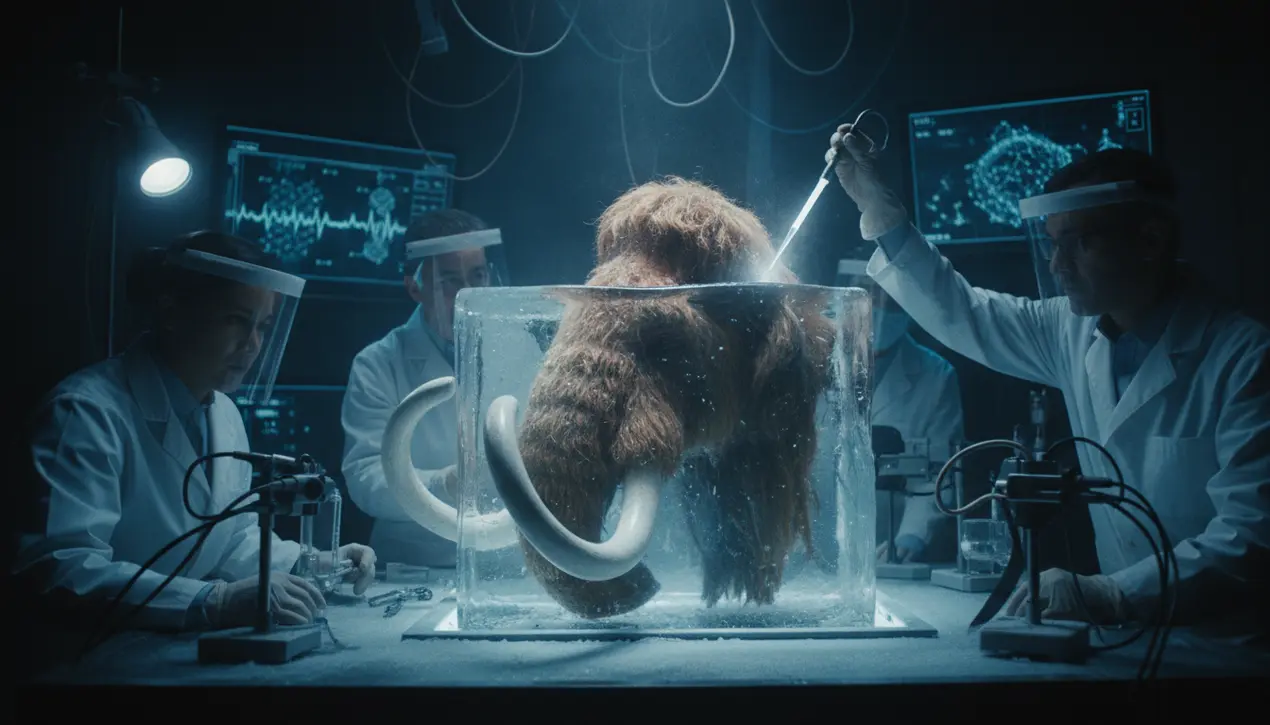
Sciencearchaeology
World’s oldest RNA extracted from ice age woolly mammoth.
KE
Kevin White
3 hours ago7 min read2 comments
In a discovery that feels ripped from the script of a science fiction blockbuster, scientists have successfully extracted and sequenced the world's oldest RNA from a 52,000-year-old ice age woolly mammoth, a breakthrough that fundamentally rewrites the rules of paleogenomics and opens a breathtaking new window into extinct life. While DNA provides the static architectural blueprint of an organism—the hardcoded list of genes—RNA is the dynamic, real-time messenger that reveals which genes were actively switched on and functioning at the moment of death.This is the critical difference between simply knowing a mammoth possessed the gene for shaggy hair and being able to witness the precise cellular machinery that produced its iconic coat, offering an unprecedented, living snapshot of its biology. The specimen, a woolly mammoth discovered in the Siberian permafrost, yielded these fragile RNA molecules, which are notoriously more ephemeral than DNA, degrading in a matter of hours under normal conditions; their preservation for millennia is a testament to the deep-freeze power of the permafrost, acting as a natural cryogenic vault.This achievement, detailed in a recent publication, required novel laboratory techniques to distinguish the ancient mammoth RNA from a pervasive soup of modern contaminants, a feat once thought impossible. For researchers like Dr.Dalén at the Centre for Palaeogenetics, this is not merely about adding data points; it’s about listening to the cellular conversation of a long-vanished creature, understanding its physiology, its immune responses to ancient pathogens, and even its metabolic state in its final hours. The implications cascade across biotechnology and medicine, suggesting that we could one day not just sequence the genome of an extinct species, but truly understand its functional biology, a foundational step for any serious de-extinction endeavor.Imagine applying this same technique to Neanderthals to see which genes were active in their brains, or to prehistoric viruses to understand their mechanisms—this is the new frontier. This is the kind of next-generation science that bridges the gap between Jurassic Park fantasy and tangible laboratory reality, pushing the boundaries of CRISPR and synthetic biology by providing a functional roadmap rather than just a parts list.The ethical dimensions are as profound as the technical ones, forcing us to consider what it means to resurrect not just the form of an animal, but its very essence. As we stand on the precipice of this new era, the recovery of ancient RNA is more than an archaeological find; it is the activation of a time machine, allowing us to witness the inner workings of lost worlds and fundamentally altering our relationship with deep time and the very definition of life itself.
#ancient RNA
#woolly mammoth
#ice age
#sequencing
#extinction
#biology breakthrough
#featured
Stay Informed. Act Smarter.
Get weekly highlights, major headlines, and expert insights — then put your knowledge to work in our live prediction markets.
Comments
Loading comments...
© 2025 Outpoll Service LTD. All rights reserved.